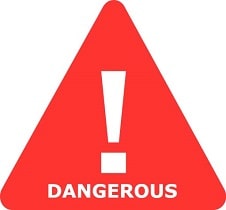Is Epirubucin Safe in Breastfeeding
Question
I am a breastfeeding mother and i want to know if it is safe to use Epirubucin? Is Epirubucin safe for nursing mother and child? Does Epirubucin extracts into breast milk? Does Epirubucin has any long term or short term side effects on infants? Can Epirubucin influence milk supply or can Epirubucin decrease milk supply in lactating mothers?
Epirubucin lactation summary

- DrLact safety Score for Epirubucin is 7 out of 8 which is considered Dangerous as per our analyses.
- A safety Score of 7 indicates that usage of Epirubucin may cause toxic or severe side effects in breastfed baby.
- Our study of different scientific research indicates that Epirubucin may cause moderate to high side effects or may affect milk supply in lactating mother.
- Our suggestion is to use safer alternate options rather than using Epirubucin .
- Usage of Epirubucin is in contradiction to breastfeeding hence if it is must to use Epirubucin and there is no better alternative available then breastfeeding shall be stopped permanently or temporarily.
- Score calculated using the DrLact safety Version 1.2 model, this score ranges from 0 to 8 and measures overall safety of drug in lactation. Scores are primarily calculated using publicly available case studies, research papers, other scientific journals and publically available data.
Answer by Dr. Ru: About Epirubucin usage in lactation
Epirubicin is an antineoplastic from the anthracycline family, with actions similar to doxorubicin but with fewer toxic effects. Since the last update we have not found published data on its excretion in breast milk. Although it has a high volume of distribution, the remaining pharmacokinetic data (not very high molecular weight and protein binding, high pKa and long half-life) make it probable that it will pass into breast milk in quantities that could be significant, as has been seen in another drug from the same therapeutic group, Doxorubicin. Given its serious side effects (cardiotoxicity and myelotoxicity) (Tjuljandin 1990) it is prudent to discontinue breastfeeding during the period in which the drug is still in the mother's body. When possible, detection in the milk of each patient to determine the total elimination of the drug would be the best indicator for resuming breastfeeding between two rounds of chemotherapy. It is known via Pharmacokinetics that after 3 elimination half-lives (T½) 87.5% of the drug is eliminated from the body; after 4 T½ 94%, after 5 T½ 96.9%, after 6 T½ 98.4% and after 7 T½ 99%. Plasma drug concentrations in the body are negligible after 7 T½. In general, a period of five half-lives may be considered a safe waiting period to return to breastfeeding (Anderson 2016). Expert authors recommend waiting 7 to 10 days (between 5 and 7 T½) after the last dose to restart breastfeeding. Meanwhile, express and discard breast milk regularly (Hale 2017 p.330). There may be an increase in the mean half-life in patients with impaired hepatic function (Twelves 1992) or in co-administration with other medication such as paclitaxel (Danesi 2002), docetaxel or dexverapamil (AEMPS 2017, BC Cancer 2017). In these cases, the safety time of interruption of breastfeeding would be increased. Some chemotherapeutics with antibiotic effects may alter the composition of the microbiota (combination of bacteria or bacterial flora) of the milk and the concentration of some of its components (Urbaniak 2014). This possibly occurs briefly with later recovery, with no harmful effects being reported in breastfed infants.
Alternate Drugs for Antineoplastic agents. ATC L01
Busulfan(Dangerous)
Cisplatin(Unsafe)
Cyclophosphamide(Dangerous)
Doxorubicin(Dangerous)
Etoposide(Dangerous)
Hydroxyurea(Low Risk)
Mercaptopurine(Safe)
Mitoxantrone(Dangerous)
Vincristine(Dangerous)
Methotrexate(Low Risk)
Imatinib(Unsafe)
Trastuzumab(Unsafe)
Bevacizumab(Low Risk)
Rituximab(Low Risk)
Alemtuzumab(Low Risk)
Fluorouracil(Dangerous)
Paclitaxel(Dangerous)
Carboplatin(Dangerous)
Cetuximab(Unsafe)
Brentuximab Vedotin(Low Risk)
Ipilimumab(Unsafe)
Everolimus(Unsafe)
Thioguanine(Dangerous)
Dacarbazine(Dangerous)
Vinorelbine(Dangerous)
Bleomycin(Dangerous)
Vinblastine(Dangerous)
Nivolumab(Unsafe)
Nilotinib(Unsafe)
Dasatinib(Unsafe)
Cladribine(Dangerous)
Erlotinib(Unsafe)
Pazopanib(Unsafe)
Capecitabine(Dangerous)
Docetaxel(Dangerous)
Carmustine(Dangerous)
Exemestane(Dangerous)
Gemcitabine(Dangerous)
Dactinomycin(Dangerous)
Fluorouracil Topical Solution(Low Risk)
Idarubicin-Hcl(Dangerous)
Ifosfamide(Dangerous)
Melphalan(Dangerous)
Mitomycin(Dangerous)
Oxaliplatin(Dangerous)
Pentostatin(Dangerous)
Procarbazine(Dangerous)
Teniposide(Dangerous)
Thiotepa(Dangerous)
Tretinoin Oral(Dangerous)
Vinorelbine Tartrate(Dangerous)
Imatinib Mesilate(Unsafe)
Altretamine(Dangerous)
Aminoglutethimide(Dangerous)
5-Aminolevulinic Acid(Low Risk)
Hydroxycarbamide(Low Risk)
Anastrozole(Dangerous)
Arsenic-Trioxide(Dangerous)
Asparaginase(Dangerous)
Bexarotene(Dangerous)
Cytarabine(Dangerous)
Chlorambucil(Dangerous)
Chlormethine(Dangerous)
Daunorubicin(Dangerous)
Rubidomycin(Dangerous)
Amethopterin(Low Risk)
Vincaleukoblastine(Dangerous)
Doxorubicin Hydrochloride(Dangerous)
Vlb(Dangerous)
Mechlorethamine(Dangerous)
Platinum Diamminodichloride(Unsafe)
4-Amino-10-methylfolic Acid(Low Risk)
5-ALA(Low Risk)
5-Fu(Dangerous)
6-Mercaptopurine(Safe)
6-Thiohypoxanthine(Safe)
6-Thioxopurine(Safe)
MTX(Low Risk)
Cytosine Arabinoside(Dangerous)
Daunomycin(Dangerous)
Actinomycin D(Dangerous)
Deoxycoformycin(Dangerous)
